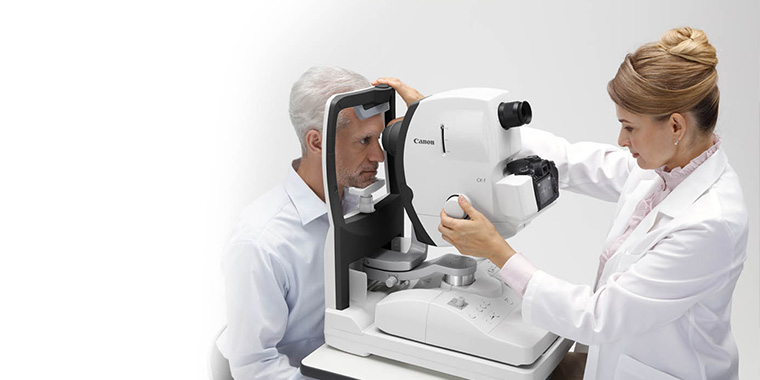Leading Cardiologist in Andalusia: Discover Specialist Clinics Near You
Leading Cardiologist in Andalusia: Discover Specialist Clinics Near You
Blog Article
The Advantages And Disadvantages of Various Refractive Surgeries for Enhanced Eyecare

LASIK Surgical Procedure
LASIK surgery is a frequently executed refractive treatment that intends to correct vision problems such as astigmatism, nearsightedness, and farsightedness. This medical technique has gotten appeal because of its performance in providing individuals with more clear vision and lowering their reliance on glasses or get in touch with lenses. Throughout the procedure, a thin flap is produced on the cornea, and a laser is utilized to improve the underlying tissue, fixing the refractive error. The flap is after that rearranged, enabling quick healing and marginal pain for the person.
Among the main benefits of LASIK surgical treatment is the rapid enhancement in vision experienced by numerous patients. A lot of people discover a significant improvement in their vision quickly after the treatment, with minimal downtime needed for healing. Additionally, LASIK is recognized for its high success rate and reduced incidence of complications when carried out by proficient cosmetic surgeons. Like any type of medical procedure, LASIK additionally brings some risks, consisting of dry eyes, glare, halos, and under or overcorrection of vision. It is essential for people considering LASIK surgical procedure to undergo a thorough assessment by an eye treatment professional to establish if they are suitable candidates for the procedure.
PRK Procedure
The PRK procedure, also recognized as Photorefractive Keratectomy, is a kind of refractive surgical procedure that intends to correct vision issues similar to LASIK surgical treatment. Unlike LASIK, which includes producing a flap in the cornea, PRK works on the surface area layer of the cornea.
One of the advantages of PRK over LASIK is that it eliminates the danger of flap-related problems since no flap is developed during the surgery. Regardless of the longer healing period, PRK can be an appropriate alternative for individuals looking for vision adjustment surgical procedure.
SMILE Surgery
An advanced refractive surgery method gaining appeal in the field of ophthalmology is SMILE Surgical procedure. Little Laceration Lenticule Extraction (SMILE) is a minimally intrusive treatment that fixes vision by reshaping the cornea making use of a femtosecond laser. Unlike traditional LASIK surgical treatment, SMILE Surgery entails creating a little laceration in the cornea to extract a lenticule, which leads to less interruption to the corneal framework and potentially quicker recuperation times.
One of the main benefits of SMILE Surgery is its capability to deal with myopia (nearsightedness) and astigmatism with high precision, causing excellent aesthetic end results for clients. The minimally intrusive nature of the treatment additionally reduces the threat of complications such as dry eye syndrome, making it a desirable alternative for individuals looking for refractive surgical procedure.

LASEK Technique
Having actually discovered the advantages and factors to consider of SMILE Surgery, an additional noteworthy refractive surgery method worth taking a look at is the LASEK Method. LASEK, which means Laser-Assisted Subepithelial Keratectomy, is a form of laser eye surgery that aims to fix refractive errors such as myopia (nearsightedness), hyperopia (farsightedness), and astigmatism.
Unlike LASIK, LASEK does not involve developing a corneal flap. Rather, throughout a LASEK procedure, the specialist utilizes a watered down alcohol option to loosen up the thin outer layer of the cornea, called the epithelium. This layer is after that carefully moved aside to permit the laser to improve the underlying corneal cells. As soon as the cornea has actually been reshaped to the desired level, the epithelial layer is repositioned.
One of the key advantages of LASEK is that it can be ideal for individuals with slim corneas who might not be great prospects for LASIK. In addition, LASEK commonly leads to minimal post-operative pain and a quicker recovery time compared to PRK. Nonetheless, the visual recuperation process with LASEK might be a little longer than with LASIK.
Implantable Call Lenses
Implantable Call Lenses offer a lasting vision adjustment option for people looking for an alternative to standard call lenses or glasses. These lenses, also referred to as phakic intraocular lenses, are operatively placed right into the eye to correct refractive errors such as nearsightedness (nearsightedness), hyperopia (farsightedness), and astigmatism. eye center andalusia. Unlike standard call lenses that remain on the surface of the eye, implantable get in touch with lenses function within the eye itself, providing clear vision without the requirement for day-to-day upkeep or removal
One of the key benefits eye doctors in andalusia of implantable call lenses is their durability. Once inserted, they can continue to be in the eye forever, using constant and steady vision correction. Furthermore, these lenses can be an exceptional alternative for people that are bad prospects for laser eye surgical procedure or that favor a reversible vision improvement treatment.
Nonetheless, implantable call lenses do lug some dangers, including the possibility for cataracts or increased eye pressure. It is crucial for people considering this alternative to seek advice from with an eye treatment expert to figure out if implantable call lenses are the right choice for their specific demands and eye wellness.
Verdict
In conclusion, each type of refractive surgery has its own benefits and negative aspects. LASIK surgery is popular for its fast recuperation time, while PRK treatment may be suitable for individuals with thin corneas. SMILE surgery offers marginal discomfort throughout the treatment, yet LASEK strategy may have a longer healing procedure. Implantable contact lenses provide an alternative for those that are not appropriate candidates for conventional surgeries. Patients need to speak with their eye care provider to determine the ideal choice for their individual demands.

On The Whole, SMILE Surgical treatment presents an appealing alternative for individuals looking to improve their vision via refractive surgical treatment.
Report this page